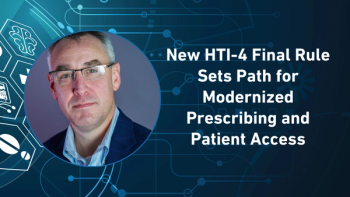
- Pharmaceutical Commerce - June 2023
- Volume 18
- Issue 3
Innovation in Heart Disease: A Deep Dive
While generics and adherence challenges are keeping drugmakers up at night, breakthroughs in the pipeline coupled with innovative uses of artificial intelligence and machine learning techniques are bringing optimism to the cardiovascular disease space.
The cardiovascular disease (CVD) pharmaceutical treatment market has traditionally involved a mosaic of modalities and medications, as, after all, heart disease is not just a single affliction but rather a group of disorders.1 This segment includes conditions such as:
- Hypertension (high blood pressure)
- Atrial fibrillation or arrhythmia (abnormal heart rhythm)
- Chronic ischemic heart disease (reduced blood supply to the heart)
- Stroke (interruption of blood flow to the brain)
- Heart failure (inability to pump blood adequately)
- Angina (caused by insufficient oxygen flow to the heart)
- Myocardial infarction (interrupted blood flow damaging heart muscle tissue)
As such, no single issue defines the complex landscape in CVD. Despite the pace of generic entrants and the impact of poor adherence to therapy on clinical outcomes, other forms of innovation are continuing to generate enthusiasm in the space. For instance, drug developers continue to bring breakthrough therapies to market, while the use of artificial intelligence (AI) and machine learning (ML) techniques are helping physicians to make more accurate and timely diagnoses and are helping to inform efforts to repurpose existing CVD drugs for new indications or pair them in opportunistic drug-drug combinations.
According to IQVIA Institute’s recent publication “The Global Use of Medicines 2023: Outlook to 2027,” CVD medications are projected to rank No. 4 in the list of top 20 therapy categories in 2027 (in terms of global spending), behind oncology, immunology, and diabetes. CVD therapies generally fall into several buckets, including:
- Statins to lower low-density lipoprotein (LDL) cholesterol
- Anti-coagulants to prevent blood clots
- Diuretics to maintain blood pressure
- Beta blockers to lower blood pressure, heart attack, and heart failure
- Angiotensin-converting enzyme (ACE) inhibitors to reduce heart failure and blood pressure
- Calcium channel blockers to reduce the workload of the heart
- Angiotensin II receptor blockers to reduce blood pressure
It could be argued that the stakes are high in CVD. Heart disease remains the leading cause of death in the US, according to January data published by the American Heart Association (AHA).2 Meanwhile, according to the report, between 2018 and 2019, direct and indirect costs of total CVD were $407.3 billion.
The potential blockbusters of tomorrow
While the CVD space was once the place where blockbuster drugs routinely planted a flag—with heart medications such as Crestor, Lipitor, Vytorin, and others practically being household names—the proportion of generic medications in CVD is expected to reach 44% of the market by 2028 (up from 32% in 2018), according to IQVIA. And the number of generic launches continues to outpace new product launches in CVD. IQVIA projects 137 loss of protection and generic entry events in CVD between 2019 and 2028—compared to 25 new CVD therapies approved in the same period.
Despite asymmetry in the proportion of generics to branded therapies entering the arena, “the past decade has also been associated with a boom in new agents and refined drug capabilities in cardiovascular and cardiometabolic care,” notes Alla Shargorodskaya, MD, senior director, therapeutic strategy and innovation, at Syneos Health.
Recent groundbreaking therapies that target the molecular basis of the disease are helping to transform the CVD arena, in terms of their ability to reduce morbidity and mortality, improve quality of life, and help some patients to avoid costly, invasive surgical interventions, trips to the emergency room, and hospital re-admissions. One recent example is the 2022 approval of Camzyos (mavacamten) from Bristol Myers Squibb (BMS). It is the first-in-class—and to date the only—therapy approved in the new cardiac myosin inhibitor class for the treatment of obstructive hypertrophic cardiomyopathy (oHCM), the most common hereditary CVD.
Prior to the approval of Camzyos, patients with severe oHCM typically required an open-heart surgery or ablation procedures, notes BMS. The company acquired Camzyos as part of its $13.1-billion buyout of MyoKardia in 2020. A second investigational therapy in the cardiac myosin inhibitor class—aficamten from Cytokinetics—is currently undergoing clinical trials.
“Sodium-glucose co-transporter inhibitor therapies (SLGT2) for the treatment of heart failure have also given many a cause for celebration,” says Pierantonio Russo, MD, chief medical officer, EVERSANA. They are designed primarily for patients with heart failure (with and without diabetes) who have a history of frequent hospitalization. “This class of drugs are proving to reduce hospitalization in these patients, and they’re offering a lot of hope for these patients,” he adds.
Meanwhile, renewed attention to resistant systemic hypertension is also encouraging. “Results from the recent BrighHTN trial (involving investigational drug baxdrostat) provide evidence that selective inhibition of aldosterone synthase leads to a substantial dose-dependent in blood pressure among patients with resistant hypertension,” explains Russo. In January, AstraZeneca entered into a definitive agreement to acquire CinCor Pharma, which produces baxdrostat.
In a parallel lane, it has been more than 30 years since a new antihypertensive agent with a new mechanism of action has been approved. In December 2022, Swiss pharma company Idorsia submitted a new drug application to FDA for its experimental therapy aprocitentan, a dual entothelin receptor antagonist (ERA), for patients with difficult-to-control hypertension.
“Aprocitentan is a potential novel and effective agent targeting a currently unopposed pathophysiologic pathway, and market authorization is expected as uncontrolled blood pressure is one of the most common risk factors for major cardiovascular events,” notes Shargorodskaya.
She adds that the "highly efficient" PSCK9 inhibitors are also making a significant impact in treating hyperlipidemia, without the feared muscular side effects or potential concerns of diabetes and dementia. There are currently three drugs in this class: Praluent (alirocumab) from Regeneron, Repatha (evolocumab) from Amgen, and Leqvio (inclisiran) from Novartis.
Identifying impacted patients earlier
Physicians often have trouble identifying and diagnosing patients with a particular form of heart disease called wild-type transthyretin amyloid cardiomyopathy (wtATTR-CM), an under-recognized, life-threatening condition that results in progressive heart failure. Pfizer has developed a novel prediction algorithm3 (working in conjunction with researchers at the Northwestern University Feinberg School of Medicine and the Brigham and Women’s Hospital) that can help to stratify patients and identify those who are at risk of wtATTR-CM.
Pfizer’s novel model leverages AI and ML—and has been validated using medical claims and electronic health records (EHRs) data—to identify symptoms of wtATTR-CM earlier. Unlike conventional statistical approaches, ML can more efficiently evaluate complex interactions across multiple input predictors, and in this particular model, was used to automate the suspicion of wtATTR-CM based on associated clinical conditions, according to the company.
In fact, published data4 reports that the model performed with 87% accuracy in predicting patients with heart failure associated with wtATTR-CM, enabling healthcare providers to identify and appropriately diagnose patients with the condition wtATTR-CM earlier and with greater accuracy. This is particularly important to allow for initiation of therapy earlier in the trajectory of this life-threatening condition.
To make the novel prediction model more easily accessible to physicians, Pfizer also developed and launched EstimATTR, a web-based educational tool that US healthcare providers can use to help estimate the probability that a hypothetical patient with heart failure may have wtATTR-CM.
AI and ML are also being explored to support faster, more accurate diagnosis in CVD by identifying clinically relevant patterns from large, complex datasets (not just EHR and claims data, but data from wearable sensors and monitors, CT scans, and more) and creating actionable outcomes.
“In the near future, it will not just be some companies—it will be most companies—that develop analytic algorithms to support their drugs,” says John Doyle, DrPH, group vice president at Exponent and adjunct assistant professor at Columbia University’s Mailman School of Public Health.“I expect that we’re going to see a lot more of that—developing predictive models based on AI and ML that are approved like a companion diagnostic—to support CVD drug development and market access.”
Putting real-world data and evidence to work
Separately, a recent EVERSANA study used real-world data (RWD) and advanced analytical techniques helped to identify patients with heart failure and fluid overload suitable for subcutaneous furosemide infusion in the outpatient settings rather than inpatient settings.
“This data allows us to more precisely identify the right patient population, something that was challenging in the past,” says Russo. “What makes this so meaningful is that subcutaneous furosemide infusion may substantially improve the care of patients with heart failure by keeping them at home rather than treating them with frequent visits in an emergency room or hospital.”
Using advanced techniques and RWD sources, “we can now prove in real-time just how effective the results are for patients,” continues Russo. “In this new climate of value-based care and outcome-based reimbursement, pharmaceutical companies must continuously demonstrate the impact of their CVD assets on reducing the total cost of care per patient, and reduce the need for more costly interventions.”
“Real-world studies help maintain access and demonstrate continued value of the product by providing evidence on comparative clinical effectiveness and costs, long-term outcomes data, patient safety data, and patient adherence and utilization data,” adds Shargorodskaya. “Continual observation of disease epidemiology, treatment patterns, and outcomes in the real world can also help to accelerate evidence generation that is needed to add indications and support label expansion for specific cardiovascular products.”
In CVD and other disease settings, real-world evidence (RWE) insights are increasingly being used to effectively articulate disease burden and demonstrate the long-term value of a therapeutic intervention and help justify premium pricing and coverage decisions.
“To do this, drug developers must strive to connect medication adherence with tangible outcomes, such as reduced hospitalizations or cardiac events, and develop comparative clinical effectiveness and cost data,” says Doyle.
Case in point
The BMS/Pfizer alliance that brought the direct-acting anti-coagulant Eliquis (apixaban)—a therapy to reduce blood clots and the risk of stroke—to market was considered a pioneer in the use of RWE to not only expand the scientific understanding of a drug after market launch, but to use the clinical findings to demonstrate the full value of the product in every day clinical practice. By linking long-term adherence to the ability to offset other, more costly interventions, the companies were able to provide an economic case for switching from warfarin (a leading alternative therapeutic option) to Eliquis, and then use the findings to inform pricing, reimbursement, and market access negotiations.
The work of the BMS/Pfizer alliance “remains the gold standard for how a CVD therapy can differentiate itself among regulators and payers based on RWE generated post-launch, and still serves as an exemplar for other drugmakers in other therapeutic classes,” says Doyle. “It was novel at the time, and many companies are still trying to emulate what this partnership has done: they proved with long-term RWE that Eliquis could lower the risk of stroke, with fewer incidents of bleeding compared to warfarin. That’s been a massive differentiator that helped to extend the lifecycle of the product.”
As part of the BMS/Pfizer alliance, the companies also partnered with FitBit to develop an algorithm to be used with their sensor that could identify patients who are at risk of atrial fibrillation (Afib). “In this context, sensor-derived insights can help to stratify patients based on risk and identify potential candidates who have elevated risk of Afib earlier (particularly those in disadvantaged communities),” notes Doyle. “While such findings are still subject to medical follow-up to verify and validate the finding, the opportunity to accelerate diagnosis is beneficial to patients, providers, payers, and manufacturers.”
Efforts to pair various CVD medications with mobile sensors and wearable devices provide novel opportunities to generate actionable data that can help to improve diagnosis, support adherence objectives, and generate RWE to strengthen the brand’s value proposition and likelihood to grow. “Progressive pharma companies are leaning into developing and deploying these digital health technology tools to differentiate their core portfolio, as well as add new products to the CVD ecosystem,” says Doyle.
Repurposing drugs in the CVD space
Drug repurposing—whereby approved therapies are able to secure label expansions into different therapeutic indications—offers another route for makers of CVD medications to prolong the lifecycle of their branded therapies. Historically, such opportunities have been driven by knowledge of underlying disease mechanisms or by serendipitous observation of clinical benefits in other patient populations—rather than by systematic efforts to prospectively match an existing drug to a new indication.5
However, there is ongoing innovation in computational analysis and predictive modeling that helps stakeholders to systematically screen drugs for disease-modifying activities, ones that are in search of repurposing opportunities that could address unmet medical need and create new opportunities for aging drug franchises. The newer approach relies on extensive phenotyping of a drug’s effect at the level of patient care—gleaned from EHR data—and using modeling systems to identify compounds that ameliorate disease phenotypes.
A recent example of drug repurposing is helping patients with another form of CVD, heart failure with preserved ejection fraction (HFpEF). “HFpEF has recently been recognized as the single greatest unmet need in cardiovascular medicine,” says Shargorodskaya of Syneos. “People with HFpEF also have a higher prevalence of hypertension, diabetes mellitus, chronic kidney disease, atrial fibrillation, and non-cardiovascular comorbidities (such as obesity and chronic obstructive pulmonary disease), compared with those with heart failure with reduced ejection fraction (HFrEF).”
The SGLT-2 inhibitor Jardiance (empagliflozin) from Boehringer Ingelheim—originally approved to lower blood sugar levels in patients managing type 2 diabetes—earned an expanded FDA approval in 2022, for the treatment of patients with heart failure independent of left ventricular ejection fraction (LVEF), and for the treatment of patients with HFpEF.
Shargorodskaya points out that empagliflozin was initially a drug for the treatment of patients with diabetes, but has demonstrated notable and nearly unprecedented benefit for cardiovascular risk reduction in HFpEF patients.
“In cardiology, one of the most recent celebrated examples of drug repurposing is the use of new antidiabetic drugs, specifically SLGT2 inhibitors, as they have been shown to reduce hospitalization in patients with heart failure even if they don’t have diabetes,” adds Russo of EVERSANA. The company is collaborating with Every Cure to carry out drug repurposing studies.
Meanwhile, “creating beneficial drug combinations is another strategy that can add therapeutic value and enhance the commercial life of today’s CVD drugs,” says Shargorodskaya. “Fixed drug-combination strategy helps to fill the therapeutic gap for patients who are unresponsive to monotherapy, can help to address comorbidities, and improve patient convenience.” This strategy can also help to extend the lifecycle of one or both drugs in the combination.
References
1. Davies, C.; Yashwardhan, S. Heart Disease Market Forecasts, IQVIA blog. October 17, 2019,
2. Heart Disease and Stroke Statistics — 2023 Update. American Heart Association. January 25, 2023,
3. Pfizer’s Novel Prediction Model, Derived from Machine Learning, Shows Robust Performance for Identifying Heart Failure Patients At-Risk for Wild-Type Transthyretin Amyloid Cardiomyopathy, a Rare and Life-Threatening Condition. Pfizer press release. May 11, 2011,
4. Huda, A.; Castaño, A.; Niyog, A.; et al. A Machine Learning Model for Identifying Patients at Risk for Wild-Type Transthyretin Amyloid Cardiomyopathy. Nat. Commun. 2021, 12 (5), 2725.
5. Abdelsayed, M.; Kort E.J.; Jovinge, S.; Mercola, M. Repurposing Drugs to Treat Cardiovascular Disease in the Era of Precision Medicine. Nat. Rev. Cardiol. 2022, 19 (5), 751-764.
Articles in this issue
over 2 years ago
Pharmaceutical Commerce - June 2023 Issue (PDF)over 2 years ago
Operational Trends Surrounding the Pharma Sales Processover 2 years ago
New Insights, Fresh Voicesover 2 years ago
The Lowdown on Logisticsover 2 years ago
IRA Journey Updateover 2 years ago
Addressing Rx Affordabilityover 2 years ago
Channel Fragmentation and Diversifying Product Archetypesover 2 years ago
New Trends in Sales Force Organizationover 2 years ago
Realistic Net-Zero Goals for Pharmaover 2 years ago
Manufacturing at the Speed of AINewsletter
Stay ahead in the life sciences industry with Pharmaceutical Commerce, the latest news, trends, and strategies in drug distribution, commercialization, and market access.





